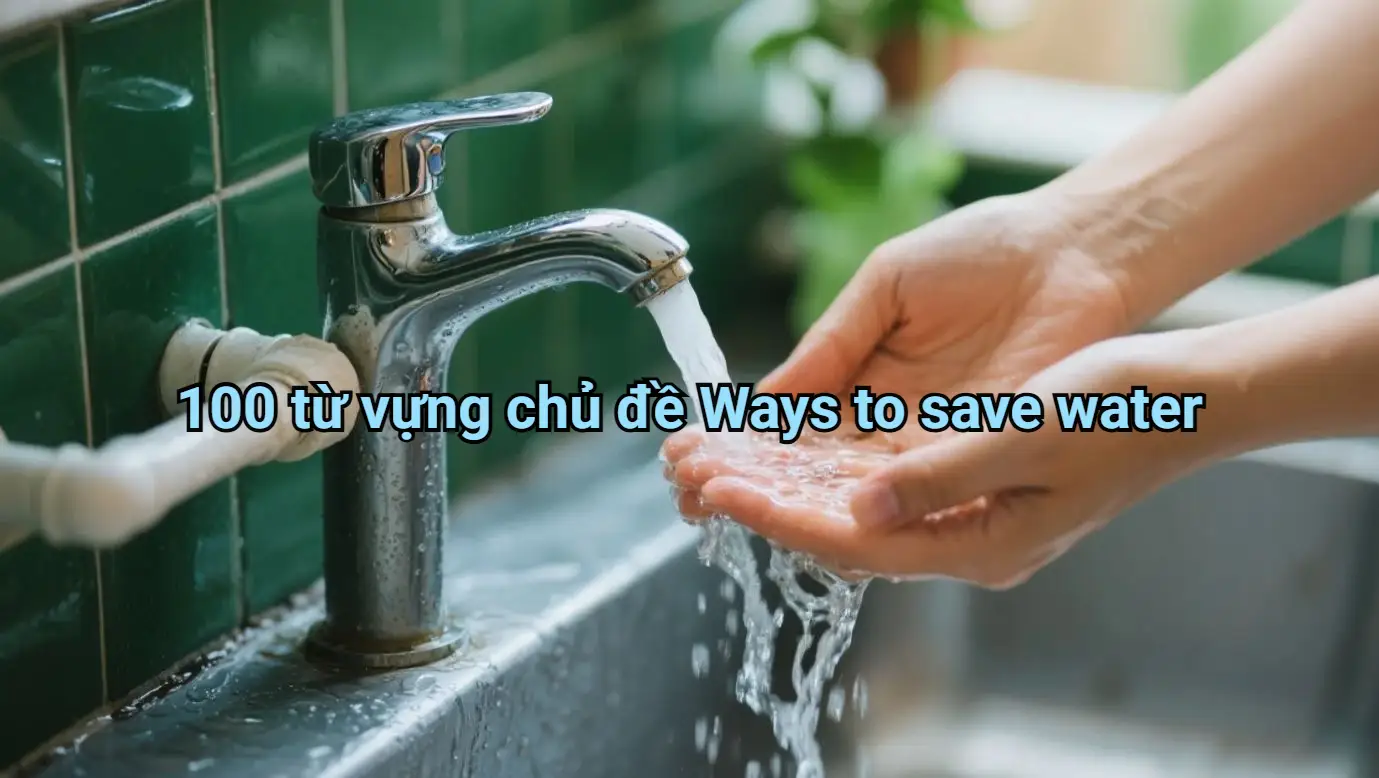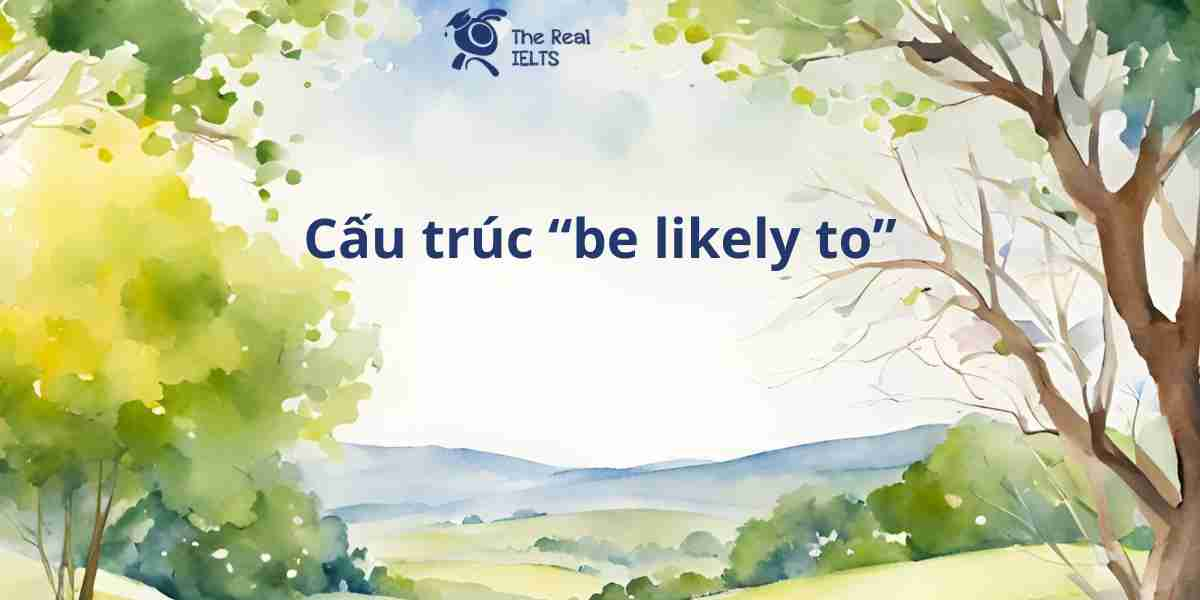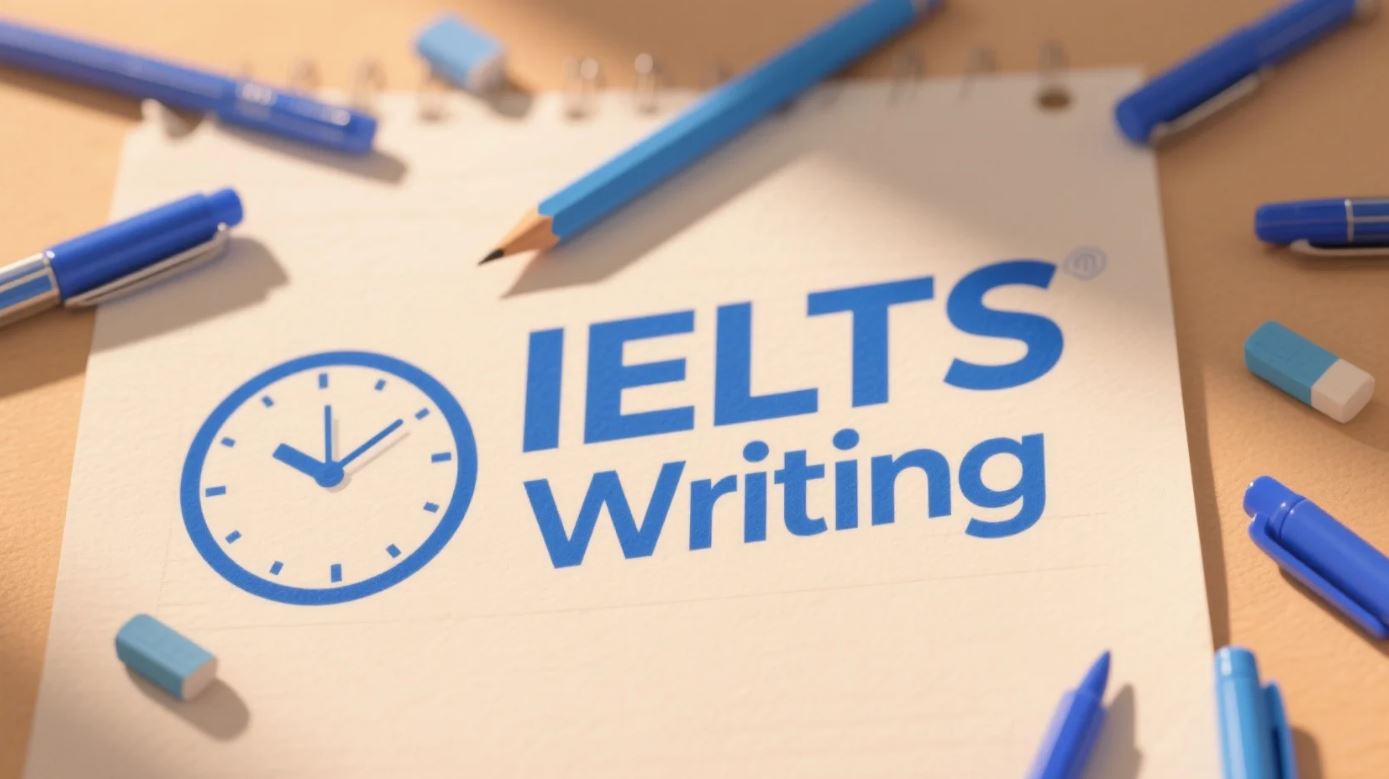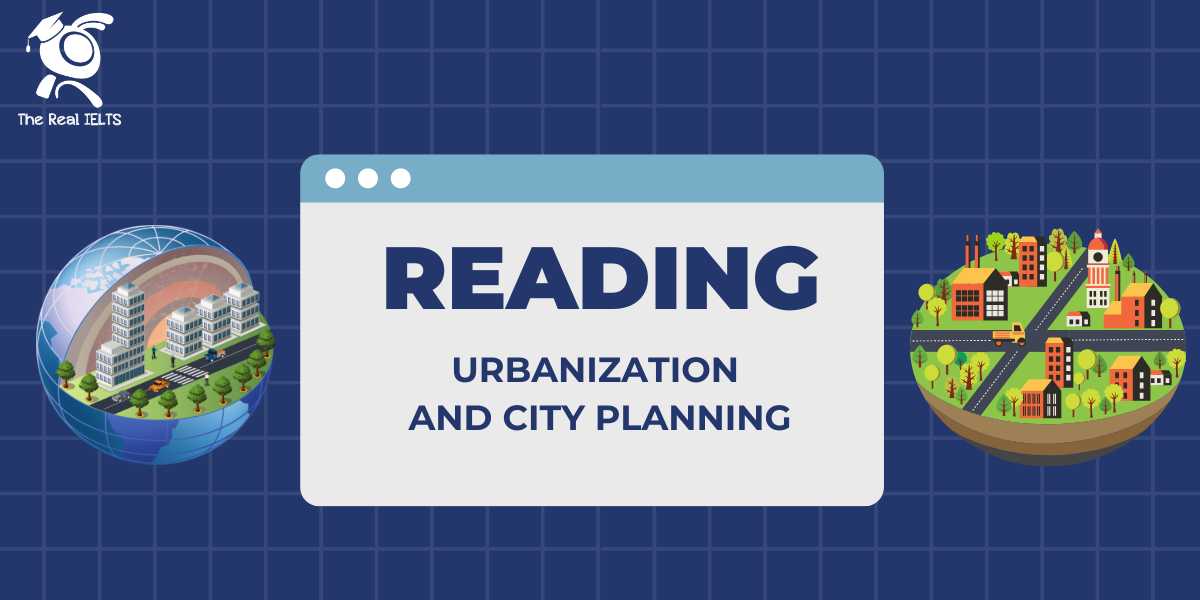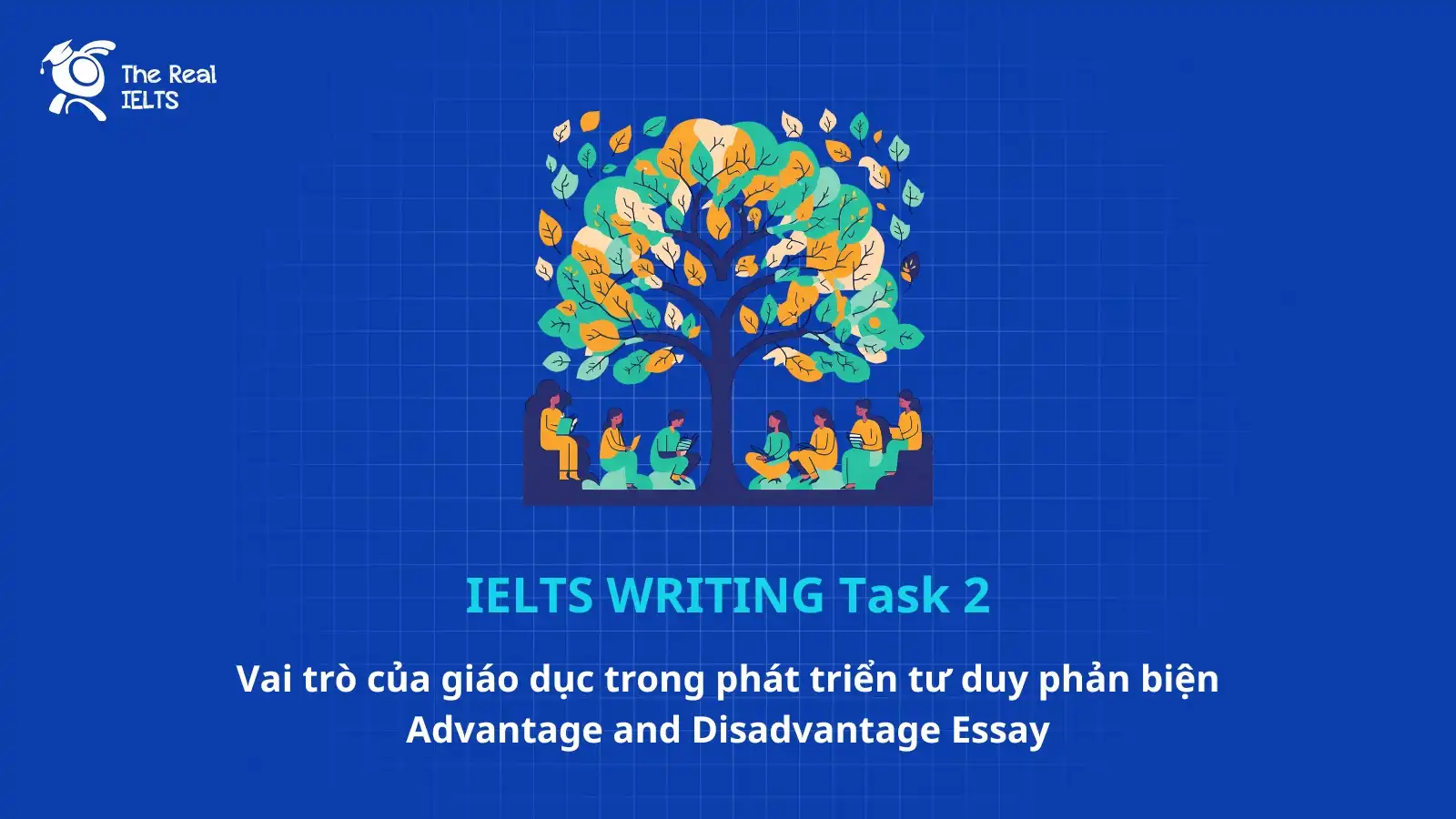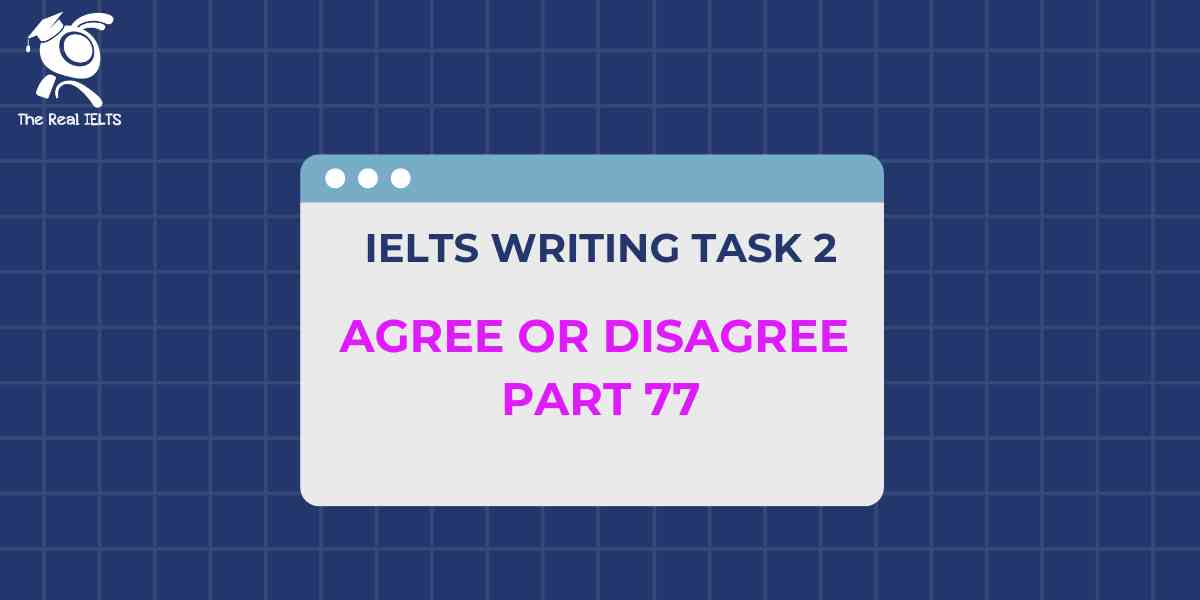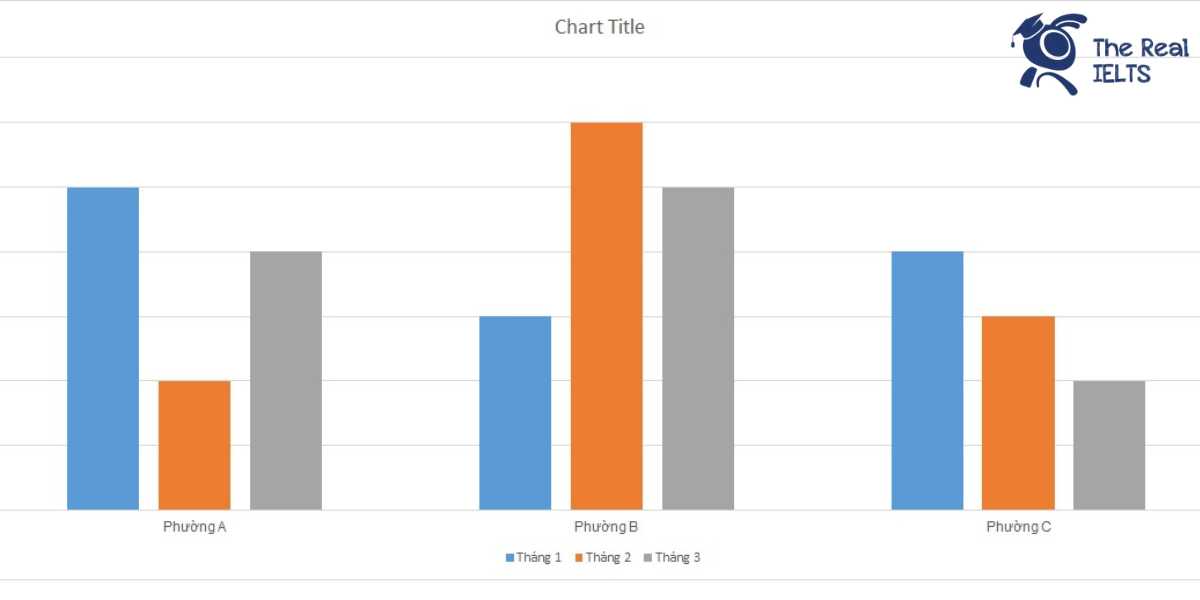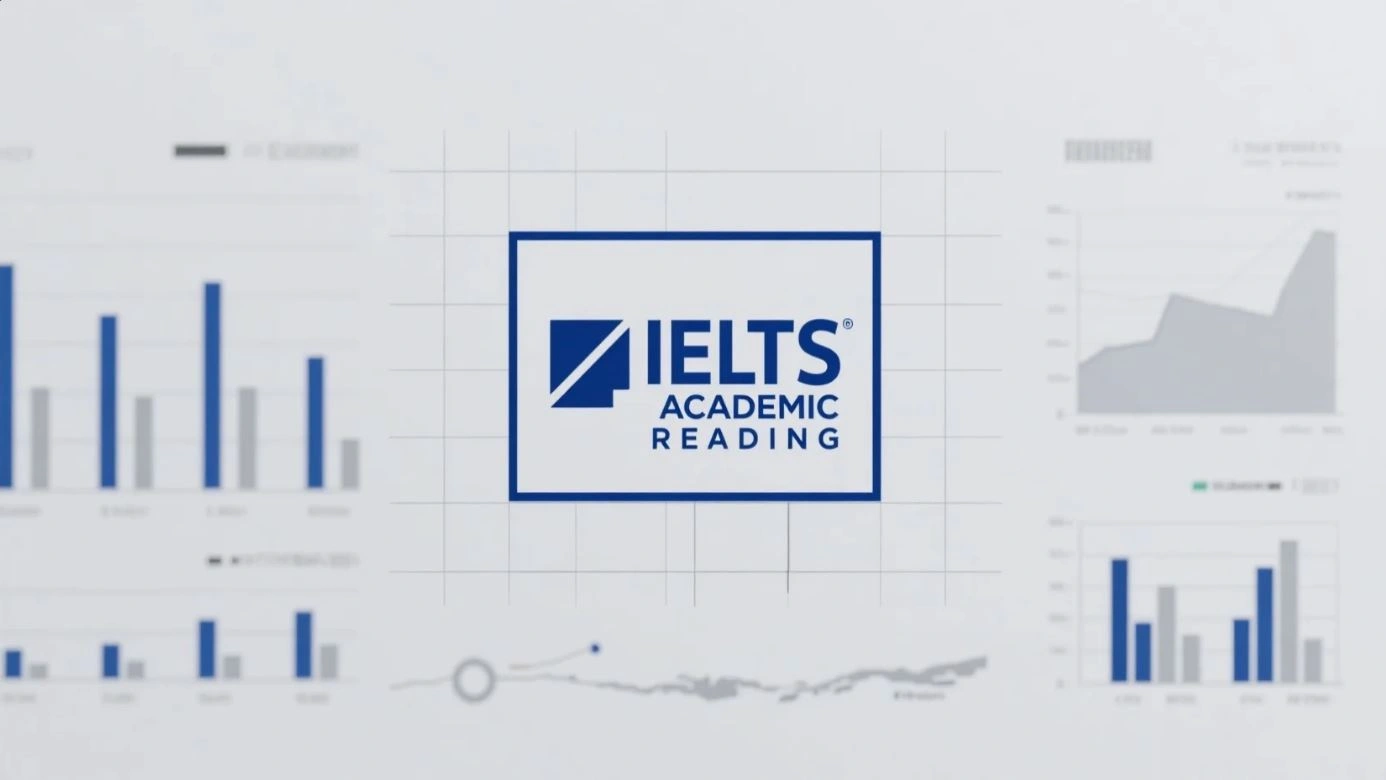Chủ đề Languages là một chủ đề có rất nhiều từ vựng, những từ vựng mà được biên soạn tại bài viết này chỉ mang tính tham khảo, làm hướng đi tự học cho các bạn muốn tự học IELTS. Sau đây là phần biên soạn 100 từ vựng chủ đề Languages.
Đọc thêm 100 từ vựng chủ đề FAMILY AND CHILDREN.
100 từ vựng chủ đề Languages
| Endangered | Dễ bị nguy hiểm | Efforts to revitalize endangered languages are crucial for cultural preservation. | Các nỗ lực để phục hồi các ngôn ngữ đang bị đe dọa là rất quan trọng cho việc bảo tồn văn hóa. |
| Revitalization | Phục hồi | Linguistic diversity enriches our global community. | Sự đa dạng ngôn ngữ làm phong phú cộng đồng toàn cầu của chúng ta. |
| Preservation | Bảo tồn | Indigenous peoples often fight to preserve their mother tongues. | Các dân tộc bản địa thường phải chiến đấu để bảo vệ tiếng mẹ đẻ của họ. |
| Linguistic | Ngôn ngữ | Bilingual education promotes multilingualism among students. | Giáo dục song ngữ thúc đẩy sự đa ngôn ngữ hóa trong số học sinh. |
| Dialect | Tiếng địa phương | Preservation of minority languages is essential for cultural heritage. | Bảo tồn các ngôn ngữ thiểu số là rất quan trọng cho di sản văn hóa. |
| Vernacular | Bản địa | Endangerment of dialects threatens linguistic diversity. | Sự đe dọa của các phương ngôn đe dọa sự đa dạng ngôn ngữ. |
| Indigenous | Tiếng mẹ đẻ | Vernacular languages reflect local cultures and traditions. | Các ngôn ngữ bản xứ phản ánh văn hóa và truyền thống địa phương. |
| Mother tongue | Đa ngôn ngữ | Ethnic minorities face challenges in preserving their linguistic identity. | Các dân tộc thiểu số đối mặt với những thách thức trong việc bảo vệ bản sắc ngôn ngữ của họ. |
| Multilingualism | Song ngữ | Language revitalization initiatives aim to combat assimilation. | Các quyền ngôn ngữ là không thể thiếu để bảo vệ sự đa dạng ngôn ngữ. |
| Bilingual | Bảo tồn | Governments implement language policies to protect minority languages. | Sự hấp thụ ngôn ngữ đe dọa sự sống còn của các ngôn ngữ thiểu số. |
| Preservation | Sự đe dọa | Language shift occurs due to societal changes and globalization. | Chính phủ triển khai các chính sách ngôn ngữ để bảo vệ các ngôn ngữ thiểu số. |
| Endangerment | Di sản văn hóa | Marginalized communities often struggle to maintain their heritage languages. | Sự thay đổi ngôn ngữ xảy ra do sự thay đổi xã hội và toàn cầu hóa. |
| Cultural heritage | Mất ngôn ngữ | Oral tradition plays a significant role in preserving minority languages. | Các cộng đồng bị đẩy lùi thường gặp khó khăn trong việc duy trì các ngôn ngữ di sản của họ. |
| Language loss | Ngôn ngữ thiểu số | Linguistic discrimination hinders the revitalization of minority languages. | Truyền thống miệt mài đóng một vai trò quan trọng trong việc bảo tồn các ngôn ngữ thiểu số. |
| Minority language | Sắc tộc | Cultural preservation efforts include language revitalization programs. | Sự phân biệt đối xử ngôn ngữ làm chậm sự hồi sinh của các ngôn ngữ thiểu số. |
| Ethnicity | Di sản văn hóa phi vật thể | Ethnic diversity contributes to linguistic vitality. | Các nỗ lực bảo tồn văn hóa bao gồm các chương trình phục hồi ngôn ngữ. |
| Intangible cultural heritage | Đa dạng ngôn ngữ | Endangered languages must be documented before they disappear. | Đa dạng dân tộc góp phần làm phong phú ngôn ngữ. |
| Linguistic diversity | Công cuộc bảo tồn | Multilingualism fosters cultural exchange and understanding. | Các chiến lược bảo tồn ngôn ngữ khác nhau tùy thuộc vào nhu cầu của cộng đồng. |
| Preservation efforts | Chương trình phục hồi ngôn ngữ | Language rights are integral to protecting linguistic diversity. | Phục hồi ngôn ngữ bản địa đòi hỏi sự hỗ trợ từ chính phủ và tổ chức. |
| Language revitalization | Quyền ngôn ngữ | Linguistic assimilation threatens the survival of minority languages. | Chỉ số nguy cơ nguy cơ ngôn ngữ giúp ưu tiên các nỗ lực bảo tồn. |
| Linguistic rights | Truyền thống miệng | Language preservation strategies vary depending on community needs. | Các chính sách phục hồi ngôn ngữ nên được bao gồm và công bằng. |
| Oral tradition | Thiểu số dân tộc | Indigenous language revitalization requires support from governments and organizations. | Sự ủng hộ đóng một vai trò quan trọng trong việc tăng nhận thức về sự đe dọa của ngôn ngữ. |
| Ethnic minority | Tiêu biểu | Language endangerment index helps prioritize preservation efforts. | Các dự án phục hồi ngôn ngữ thành công làm mô hình cho các cộng đồng khác. |
| Assimilation | Ngôn ngữ di sản | Language revitalization policies should be inclusive and equitable. | Các hội thảo phục hồi ngôn ngữ cung cấp đào tạo và tài nguyên cho các nhà hoạt động. |
| Language policy | Chính sách ngôn ngữ | Advocacy plays a crucial role in raising awareness about language endangerment. | Đa dạng văn hóa rõ ràng trong cảnh quan ngôn ngữ của nhiều khu vực. |
| Language shift | Sự thay đổi ngôn ngữ | Successful language revitalization projects serve as models for other communities. | Các chiến dịch bảo tồn ngôn ngữ nhằm kêu gọi sự hỗ trợ cho các ngôn ngữ đang bị đe dọa. |
| Linguistic identity | Nhận thức ngôn ngữ | Language revitalization workshops provide training and resources for activists. | Các chiến lược hồi sinh ngôn ngữ bao gồm sự tham gia và ủng hộ từ cộng đồng. |
| Linguistic diversity | Đa dạng ngôn ngữ | Cultural diversity is evident in the linguistic landscape of many regions. | Các sáng kiến phục hồi ngôn ngữ đòi hỏi cam kết và nguồn lực lâu dài. |
| Marginalized | Lợi ích thiểu số văn hóa | Language preservation campaigns aim to mobilize support for endangered languages. | Các nỗ lực bảo tồn ngôn ngữ thiểu số tập trung vào việc ghi chú và giáo dục. |
| Heritage language | Bảo tồn ngôn ngữ | Linguistic revitalization strategies involve community engagement and empowerment. | Các dự án bảo tồn ngôn ngữ thiểu số thường phụ thuộc vào các phong trào cơ sở. |
| Language documentation | Kỹ thuật tài liệu ngôn ngữ | Language revitalization initiatives require long-term commitment and resources. | Các thành công của việc bảo tồn ngôn ngữ thiểu số truyền cảm hứng cho các cộng đồng khác. |
| Linguistic discrimination | Phân biệt đối xử ngôn ngữ | Minority language preservation efforts focus on documentation and education. | Các nguồn lực bảo tồn ngôn ngữ thiểu số bao gồm tài trợ và hỗ trợ kỹ thuật. |
| Cultural preservation | Bảo tồn văn hóa | Minority language revitalization is a complex process with many challenges. | Các hội thảo bảo tồn ngôn ngữ thiểu số tạo điều kiện cho sự hợp tác và chia sẻ kiến thức. |
| Language revitalization programs | Các chương trình phục hồi ngôn ngữ | Minority language preservation projects often rely on grassroots movements. | Các khóa học bảo tồn ngôn ngữ thiểu số cung cấp đào tạo về phương pháp làm việc thực tế. |
| Ethnolinguistic | Dân tộc ngôn ngữ | Minority language preservation success stories inspire other communities. | Các kỹ thuật ghi chú ngôn ngữ thiểu số giúp ghi lại các đặc điểm ngôn ngữ và biểu hiện văn hóa. |
| Language endangerment | Đe dọa ngôn ngữ | Minority language preservation resources include funding and technical support. | Các nỗ lực ghi chú ngôn ngữ thiểu số tạo ra tài liệu quý giá cho các dự án bảo tồn ngôn ngữ. |
| Minority language education | Giáo dục tiếng thiểu số | Minority language preservation conferences facilitate collaboration and knowledge sharing. | Các sáng kiến ghi chú ngôn ngữ thiểu số liên quan đến sự hợp tác với người bản xứ. |
| Language revitalization efforts | Các nỗ lực phục hồi ngôn ngữ | Minority language preservation workshops provide practical skills and tools. | Các dự án ghi chú ngôn ngữ thiểu số tạo ra các tài liệu như từ điển, ngữ pháp và hướng dẫn ngôn ngữ. |
| Language maintenance | Bảo tồn ngôn ngữ | Language documentation techniques help linguists record endangered languages. | Bảo tồn ngôn ngữ thiểu số quan trọng để duy trì sự đa dạng văn hóa. |
| Language revitalization strategies | Chiến lược phục hồi ngôn ngữ | Language documentation efforts contribute to the preservation of linguistic diversity. | Các sáng kiến bảo tồn ngôn ngữ thiểu số tập trung vào ghi chú và phục hồi. |
| Endangered language documentation | Tài liệu ngôn ngữ nguy cơ | Language documentation initiatives involve collaboration between linguists and communities. | Các dự án bảo tồn ngôn ngữ thiểu số nhằm tạo ra các chương trình ngôn ngữ bền vững và tài liệu. |
| Ethnolinguistic diversity | Đa dạng ngôn ngữ văn hóa | Language documentation projects produce valuable resources for future generations. | Các chiến dịch bảo tồn ngôn ngữ thiểu số ủng hộ sự thay đổi chính sách để hỗ trợ quyền lợi ngôn ngữ. |
| Language vitality | Sức sống của ngôn ngữ | Language documentation conferences bring together experts to discuss best practices. | Các thành công của việc bảo tồn ngôn ngữ thiểu số truyền cảm hứng cho các cộng đồng khác để hành động. |
| Language extinction | Tuyệt chủng ngôn ngữ | Language documentation workshops train participants in fieldwork methods. | Các nguồn lực bảo tồn ngôn ngữ thiểu số bao gồm cơ hội tài trợ và hỗ trợ kỹ thuật. |
| Language preservation initiatives | Các sáng kiến bảo tồn ngôn ngữ | Minority language revitalization efforts require community involvement and support. | Các hội thảo bảo tồn ngôn ngữ thiểu số tạo điều kiện cho việc chia sẻ kinh nghiệm và chiến lược. |
| Cultural diversity | Đa dạng văn hóa | Minority language revitalization initiatives address language endangerment factors. | Các khóa học bảo tồn ngôn ngữ thiểu số cung cấp đào tạo về việc giảng dạy ngôn ngữ và hoạt động vận động. |
| Linguistic minority rights | Quyền thiểu số ngôn ngữ | Minority language revitalization projects focus on language teaching and literacy. | Các kỹ thuật ghi chú ngôn ngữ thiểu số bắt lấy các dữ liệu ngôn ngữ qua các cuộc phỏng vấn và ghi âm. |
| Language revitalization movements | Các chính sách phục hồi ngôn ngữ | Minority language revitalization campaigns raise awareness and promote language pride. | Các nỗ lực ghi chú ngôn ngữ thiểu số tạo ra một bản ghi về sự đa dạng ngôn ngữ cho thế hệ tương lai. |
| Language shift | Các sáng kiến phục hồi ngôn ngữ | Minority language revitalization success stories demonstrate the importance of perseverance. | Các sáng kiến ghi chú ngôn ngữ thiểu số liên quan đến việc hợp tác với người bản xứ để bảo tồn di sản ngôn ngữ của họ. |
| Language endangerment index | Đa dạng ngôn ngữ | Minority language revitalization resources include teaching materials and language apps. | Các dự án ghi chú ngôn ngữ thiểu số tạo ra các tài liệu như từ điển, ngữ pháp, và hướng dẫn ngôn ngữ. |
| Language revitalization policies | Các chiến dịch phục hồi ngôn ngữ | Minority language revitalization conferences provide a platform for sharing experiences and strategies. | Các hội thảo phục hồi ngôn ngữ thiểu số cung cấp một nền tảng để chia sẻ kinh nghiệm và chiến lược. |
| Language revitalization initiatives | Câu chuyện thành công phục hồi ngôn ngữ | Minority language revitalization workshops offer training in language revitalization techniques. | Các khóa học thực hành phục hồi ngôn ngữ thiểu số cung cấp đào tạo về các kỹ thuật phục hồi ngôn ngữ. |
| Language revitalization advocacy | Tài nguyên phục hồi ngôn ngữ | Minority language documentation techniques include audio and video recordings. | Các kỹ thuật tài liệu ngôn ngữ thiểu số bao gồm ghi âm và quay phim. |
| Linguistic assimilation | Hội nghị phục hồi ngôn ngữ | Minority language documentation efforts document linguistic features and cultural practices. | Các nỗ lực tài liệu ngôn ngữ thiểu số ghi lại các đặc điểm ngôn ngữ và thực hành văn hóa. |
| Language endangerment factors | Chiến lược phục hồi ngôn ngữ | Minority language documentation initiatives aim to create comprehensive language archives. | Các sáng kiến tài liệu ngôn ngữ thiểu số nhằm tạo ra các bộ lưu trữ ngôn ngữ toàn diện. |
| Language revitalization challenges | Các chương trình phục hồi ngôn ngữ | Minority language documentation projects involve collaboration with native speakers. | Các dự án tài liệu ngôn ngữ thiểu số liên quan đến sự hợp tác với người bản địa. |
| Indigenous language rights | Các dự án phục hồi ngôn ngữ | Minority language documentation conferences gather linguists and community members to discuss documentation methods. | Các hội thảo tài liệu ngôn ngữ thiểu số thu hút các nhà ngôn ngữ học và cộng đồng để thảo luận về các phương pháp tài liệu. |
| Language endangerment prevention | Các chiến dịch phục hồi ngôn ngữ | Minority language documentation workshops train participants in linguistic fieldwork. | Các khóa học tài liệu ngôn ngữ thiểu số cung cấp đào tạo về các phương pháp nghiên cứu ngôn ngữ. |
| Language documentation techniques | Câu chuyện thành công phục hồi ngôn ngữ | Minority language preservation is crucial for maintaining cultural diversity. | Việc bảo tồn ngôn ngữ thiểu số là rất quan trọng để duy trì sự đa dạng văn hóa. |
| Linguistic revitalization efforts | Tài nguyên phục hồi ngôn ngữ | Minority language preservation initiatives focus on language revitalization and education. | Các sáng kiến bảo tồn ngôn ngữ thiểu số tập trung vào việc phục hồi và giáo dục ngôn ngữ. |
| Language revitalization projects | Hội nghị phục hồi ngôn ngữ | Minority language preservation projects aim to create sustainable language programs. | Các dự án bảo tồn ngôn ngữ thiểu số nhằm tạo ra các chương trình ngôn ngữ bền vững. |
| Language revitalization programs | Các chương trình phục hồi ngôn ngữ | Minority language preservation campaigns advocate for language rights and recognition. | Các chiến dịch bảo tồn ngôn ngữ thiểu số lên tiếng ủng hộ quyền lợi và sự công nhận ngôn ngữ. |
| Language preservation methods | Các dự án phục hồi ngôn ngữ | Minority language preservation success stories inspire other communities to take action. | Câu chuyện thành công về bảo tồn ngôn ngữ thiểu số truyền cảm hứng để cộng đồng khác hành động. |
| Language preservation strategies | Các chiến dịch phục hồi ngôn ngữ | Minority language preservation resources include textbooks, dictionaries, and language materials. | Các tài nguyên bảo tồn ngôn ngữ thiểu số bao gồm sách giáo khoa, từ điển và tài liệu ngôn ngữ. |
| Language revitalization campaigns | Câu chuyện thành công phục hồi ngôn ngữ | Minority language preservation conferences provide a platform for discussing preservation strategies. | Các hội thảo bảo tồn ngôn ngữ thiểu số cung cấp một nền tảng để thảo luận về các chiến lược bảo tồn. |
| Language revitalization success stories | Tài nguyên phục hồi ngôn ngữ | Minority language preservation workshops offer training in language teaching and advocacy. | Các khóa học bảo tồn ngôn ngữ thiểu số cung cấp đào tạo về giảng dạy ngôn ngữ và ủng hộ. |
| Language revitalization resources | Hội nghị phục hồi ngôn ngữ | Minority language revitalization efforts aim to reverse language shift and promote language use. | Các nỗ lực phục hồi ngôn ngữ thiểu số nhằm đảo ngược sự chuyển đổi ngôn ngữ và thúc đẩy việc sử dụng ngôn ngữ. |
| Language revitalization conferences | Các chương trình phục hồi ngôn ngữ | Minority language revitalization initiatives involve community members in decision-making processes. | Các sáng kiến phục hồi ngôn ngữ thiểu số liên quan đến việc tham gia cộng đồng trong quá trình ra quyết định. |
| Linguistic revitalization strategies | Các dự án phục hồi ngôn ngữ | Minority language revitalization projects prioritize language teaching and literacy programs. | Các dự án phục hồi ngôn ngữ thiểu số ưu tiên các chương trình giảng dạy ngôn ngữ và học biết. |
| Language revitalization workshops | Các chiến dịch phục hồi ngôn ngữ | Minority language revitalization campaigns raise awareness about the importance of language diversity. | Các chiến dịch phục hồi ngôn ngữ thiểu số nâng cao nhận thức về tầm quan trọng của sự đa dạng ngôn ngữ. |
| Language preservation initiatives | Câu chuyện thành công phục hồi ngôn ngữ | Minority language revitalization success stories demonstrate the resilience of language communities. | Câu chuyện thành công về phục hồi ngôn ngữ thiểu số là minh chứng cho sự kiên trì của cộng đồng ngôn ngữ. |
| Language preservation projects | Tài nguyên phục hồi ngôn ngữ | Minority language revitalization resources include language learning apps and online courses. | Các nguồn lực phục hồi ngôn ngữ thiểu số bao gồm các ứng dụng học ngôn ngữ và các khóa học trực tuyến. |
| Language preservation campaigns | Hội nghị phục hồi ngôn ngữ | Minority language revitalization conferences bring together experts to share best practices and research findings. | Các hội thảo phục hồi ngôn ngữ thiểu số tập hợp các chuyên gia để chia sẻ các phương pháp hay và kết quả nghiên cứu. |
| Language preservation success stories | Các chương trình phục hồi ngôn ngữ | Minority language revitalization workshops provide training in language planning and policy development. | Các khóa học phục hồi ngôn ngữ thiểu số cung cấp đào tạo về quy hoạch ngôn ngữ và phát triển chính sách. |
| Language preservation resources | Các dự án phục hồi ngôn ngữ | Minority language documentation techniques capture linguistic nuances and cultural expressions. | Các kỹ thuật tài liệu ngôn ngữ thiểu số bắt kịp các nét ngôn ngữ và biểu hiện văn hóa. |
| Language preservation conferences | Các chiến dịch phục hồi ngôn ngữ | Minority language documentation efforts create valuable resources for language revitalization projects. | Các nỗ lực tài liệu ngôn ngữ thiểu số tạo ra các nguồn lực quý giá cho các dự án phục hồi ngôn ngữ. |
| Language preservation workshops | Câu chuyện thành công phục hồi ngôn ngữ | Minority language documentation initiatives involve collaboration with native speakers and community members. | Các sáng kiến tài liệu ngôn ngữ thiểu số đều đặn hợp tác với người bản địa và cộng đồng. |
| Minority language preservation | Tài nguyên phục hồi ngôn ngữ | Minority language documentation projects produce audio recordings, transcriptions, and dictionaries. | Các dự án tài liệu ngôn ngữ thiểu số tạo ra các bản ghi âm, bản chép và từ điển. |
| Minority language documentation | Hội nghị phục hồi ngôn ngữ | Minority language documentation conferences facilitate networking and knowledge exchange among linguists. | Các hội thảo tài liệu ngôn ngữ thiểu số tạo điều kiện cho việc giao lưu và trao đổi kiến thức giữa các nhà ngôn ngữ học. |
| Minority language revitalization | Các chương trình phục hồi ngôn ngữ | Minority language documentation workshops offer hands-on training in linguistic fieldwork methods. | Các khóa học tài liệu ngôn ngữ thiểu số cung cấp đào tạo thực hành về các phương pháp nghiên cứu ngôn ngữ. |
| Minority language preservation efforts | Các dự án phục hồi ngôn ngữ | Minority language preservation is essential for maintaining cultural heritage and identity. | Bảo tồn ngôn ngữ của các dân tộc thiểu số là quan trọng để duy trì di sản văn hóa và bản sắc nhân dân. |
| Minority language preservation initiatives | Các chiến dịch phục hồi ngôn ngữ | Minority language preservation initiatives focus on language documentation and revitalization. | Các sáng kiến bảo tồn ngôn ngữ của dân tộc thiểu số tập trung vào việc ghi chép và phục hồi ngôn ngữ. |
| Minority language preservation projects | Câu chuyện thành công phục hồi ngôn ngữ | Minority language preservation projects aim to create sustainable language programs and materials. | Các dự án bảo tồn ngôn ngữ của dân tộc thiểu số nhằm tạo ra các chương trình ngôn ngữ bền vững và tài liệu. |
| Minority language preservation campaigns | Tài nguyên phục hồi ngôn ngữ | Minority language preservation campaigns advocate for policy changes to support language rights. | Các chiến dịch bảo tồn ngôn ngữ của dân tộc thiểu số tán thành thay đổi chính sách để hỗ trợ quyền ngôn ngữ. |
| Minority language preservation success stories | Hội nghị phục hồi ngôn ngữ | Minority language preservation success stories inspire other communities to take action to preserve their languages. | Các câu chuyện thành công về bảo tồn ngôn ngữ của dân tộc thiểu số truyền cảm hứng cho các cộng đồng khác hành động để bảo tồn ngôn ngữ của họ. |
| Minority language preservation resources | Các chương trình phục hồi ngôn ngữ | Minority language preservation resources include funding opportunities and technical assistance. | Nguồn lực bảo tồn ngôn ngữ của dân tộc thiểu số bao gồm cơ hội tài trợ và hỗ trợ kỹ thuật. |
| Minority language preservation conferences | Các dự án phục hồi ngôn ngữ | Minority language preservation conferences provide a platform for discussing preservation strategies and challenges. | Các hội nghị bảo tồn ngôn ngữ của dân tộc thiểu số cung cấp nền tảng để thảo luận về các chiến lược và thách thức trong việc bảo tồn ngôn ngữ. |
| Minority language preservation workshops | Các chiến dịch phục hồi ngôn ngữ | Minority language preservation workshops offer training in language teaching, documentation, and advocacy. | Các khóa học bảo tồn ngôn ngữ của dân tộc thiểu số cung cấp đào tạo về giảng dạy ngôn ngữ, ghi chép và bảo vệ quyền lợi. |
| Minority language revitalization efforts | Câu chuyện thành công phục hồi ngôn ngữ | Minority language revitalization efforts aim to reclaim language use in everyday life. | Các nỗ lực phục hồi ngôn ngữ của dân tộc thiểu số nhằm khôi phục việc sử dụng ngôn ngữ trong đời sống hàng ngày. |
| Minority language revitalization initiatives | Tài nguyên phục hồi ngôn ngữ | Minority language revitalization initiatives empower communities to take ownership of their linguistic heritage. | Các sáng kiến phục hồi ngôn ngữ của dân tộc thiểu số giúp cộng đồng đảm nhận quyền sở hữu về di sản ngôn ngữ của họ. |
| Minority language revitalization projects | Hội nghị phục hồi ngôn ngữ | Minority language revitalization projects promote language learning through immersion programs and community events. | Các dự án phục hồi ngôn ngữ của dân tộc thiểu số thúc đẩy việc học ngôn ngữ thông qua các chương trình ngâm cứu và sự kiện cộng đồng. |
| Minority language revitalization campaigns | Các chương trình phục hồi ngôn ngữ | Minority language revitalization campaigns raise awareness about the value of linguistic diversity. | Các chiến dịch phục hồi ngôn ngữ của dân tộc thiểu số tăng cường nhận thức về giá trị của đa dạng ngôn ngữ. |
| Minority language revitalization success stories | Các dự án phục hồi ngôn ngữ | Minority language revitalization success stories highlight the resilience of language communities in the face of adversity. | Các câu chuyện thành công về phục hồi ngôn ngữ của dân tộc thiểu số làm nổi bật sự kiên trì của cộng đồng ngôn ngữ trước mặt khó khăn. |
| Minority language revitalization resources | Các chiến dịch phục hồi ngôn ngữ | Minority language revitalization resources include language learning materials and teacher training programs. | Nguồn lực phục hồi ngôn ngữ của dân tộc thiểu số bao gồm tài liệu học ngôn ngữ và các chương trình đào tạo giáo viên. |
| Minority language revitalization conferences | Câu chuyện thành công phục hồi ngôn ngữ | Minority language revitalization conferences provide a forum for sharing experiences and best practices. | Các hội nghị phục hồi ngôn ngữ của dân tộc thiểu số tạo cơ hội chia sẻ kinh nghiệm và phương pháp hiệu quả. |
| Minority language revitalization workshops | Tài nguyên phục hồi ngôn ngữ | Minority language revitalization workshops offer practical skills training for language activists and educators. | Các khóa học phục hồi ngôn ngữ của dân tộc thiểu số cung cấp đào tạo kỹ năng thực tế cho những người hoạt động và giáo viên ngôn ngữ. |
| Minority language documentation techniques | Hội nghị phục hồi ngôn ngữ | Minority language documentation techniques capture linguistic data through interviews and recordings. | Công nghệ tài liệu ngôn ngữ của các dân tộc thiểu số ghi lại dữ liệu ngôn ngữ thông qua cuộc phỏng vấn và các bản ghi. |
| Minority language documentation efforts | Các chương trình phục hồi ngôn ngữ | Minority language documentation efforts create a record of linguistic diversity for future generations. | Nỗ lực tài liệu ngôn ngữ của các dân tộc thiểu số tạo ra một bản ghi về sự đa dạng ngôn ngữ cho các thế hệ sau. |
| Minority language documentation initiatives | Các dự án phục hồi ngôn ngữ | Minority language documentation initiatives involve collaboration with speakers to preserve their linguistic heritage. | Các sáng kiến tài liệu ngôn ngữ của các dân tộc thiểu số liên quan đến sự hợp tác với người nói để bảo tồn di sản ngôn ngữ của họ. |
| Minority language documentation projects | Các chiến dịch phục hồi ngôn ngữ | Minority language documentation projects produce resources such as dictionaries, grammars, and language guides. | Các dự án tài liệu ngôn ngữ của các dân tộc thiểu số sản xuất các tài liệu như từ điển, ngữ pháp và hướng dẫn ngôn ngữ. |
Đọc thêm 20 chủ đề luyện Reading và từ vựng để thi IELTS.
Bài tập từ vựng chủ đề Languages
- Điền vào chỗ trống: The ________ of minority languages is a matter of concern worldwide.
- True or False: ________ languages are often at risk of disappearing.
- What is the term for efforts aimed at bringing back a dying language? ________
- Describe what is meant by “linguistic diversity.”
- Give an example of an ________ language in your country.
- What does the term “language revitalization” mean?
- How does multilingualism contribute to cultural richness?
- Explain the difference between a ________ and a language.
- Provide an example of a ________ community that struggles to maintain its language.
- How can language ________ efforts be supported by governments?
- True or False: Assimilation always leads to the loss of minority languages.
- What are some challenges faced by ________ languages in modern societies?
- Discuss the importance of preserving ________ as part of cultural heritage.
- Why are language rights essential for ethnic minorities?
- How can oral tradition contribute to the preservation of minority languages?
- List three factors contributing to language ________.
- Give an example of a language ________ strategy.
- Discuss the role of education in preserving ________ languages.
- How can technology aid in language ________?
- True or False: Language shift occurs when a community adopts a new language, abandoning their original one.
- Describe the concept of linguistic ________.
- Why is it important to document endangered languages?
- Give an example of a government policy that supports linguistic diversity.
- Explain the term “language preservation.”
- Discuss the impact of globalization on linguistic ________.
- How can cultural ________ help preserve minority languages?
- What are some efforts made by communities to revitalize their languages?
- Provide examples of linguistic discrimination in society.
- How does language reflect ________ identity?
- True or False: Endangered languages cannot be revived once they reach a certain point.
- Discuss the role of media in language ________.
- Describe the process of language shift.
- How can communities measure the vitality of their languages?
- What are some successful examples of language revitalization ________?
- Explain why heritage language programs are important.
- True or False: Language extinction is inevitable for all minority languages.
- Discuss the importance of intergenerational transmission of language.
- How can diaspora communities contribute to language preservation?
- Provide examples of language revitalization ________ that have been effective.
- Explain why language ________ is considered a human right.
- Describe the challenges faced by minority languages in the digital age.
- Discuss the significance of language ________ in maintaining cultural diversity.
- How can governments promote linguistic ________?
- True or False: Linguistic assimilation always leads to the loss of cultural identity.
- Explain the difference between tangible and intangible ________ heritage.
- Provide examples of traditional practices that contribute to language preservation.
- Discuss the role of language advocacy groups in preserving minority languages.
- How do language policies impact linguistic ________?
- Describe the process of language documentation.
- True or False: Minority language revitalization efforts are often met with resistance.
- Explain why linguistic diversity is important for global communication.
- Discuss the impact of urbanization on minority languages.
- Describe the steps involved in developing a language revitalization program.
- Provide examples of grassroots movements aimed at language preservation.
- True or False: Language preservation efforts are only necessary for endangered languages.
- Discuss the relationship between language and power.
- Explain how language revitalization can contribute to community development.
- Describe the role of storytelling in preserving minority languages.
- Provide examples of language revitalization projects around the world.
- True or False: Linguistic diversity hinders social cohesion.
- Discuss the importance of linguistic rights for minority communities.
- Explain how language revitalization can strengthen cultural identity.
- Describe the role of education systems in language preservation.
- Provide examples of government-funded language revitalization initiatives.
- True or False: Language endangerment is solely caused by external factors.
- Discuss the impact of climate change on indigenous languages.
- Explain how language revitalization efforts can be sustainable.
- Describe the significance of language nests in early childhood language learning.
- Provide examples of linguistic revitalization strategies used by indigenous communities.
- True or False: Language preservation is only relevant to linguists and anthropologists.
- Discuss the role of language in preserving traditional ecological knowledge.
- Explain how language revitalization can contribute to economic development.
- Describe the impact of colonization on indigenous languages.
- Provide examples of language preservation initiatives supported by NGOs.
- True or False: Language revitalization efforts are futile in the face of globalization.
- Discuss the role of language in preserving cultural practices.
- Explain how language revitalization can empower marginalized communities.
- Describe the impact of migration on language vitality.
- Provide examples of successful language revitalization campaigns.
- True or False: Language preservation efforts should prioritize written over spoken forms.
- Discuss the role of language in maintaining social cohesion within communities.
- Explain how language revitalization can contribute to mental health and well-being.
- Describe the impact of mass media on minority languages.
- Provide examples of language preservation success stories.
- True or False: Language revitalization is only relevant to small communities.
- Discuss the relationship between language and identity politics.
- Explain how language revitalization can contribute to cultural tourism.
- Describe the impact of urbanization on traditional language transmission.
- Provide examples of language preservation workshops.
- True or False: Language revitalization efforts should focus solely on linguistic aspects.
- Discuss the role of language in preserving traditional healing practices.
- Explain how language revitalization can foster intergenerational bonds.
- Describe the impact of globalization on language endangerment.
- Provide examples of language preservation conferences.
- True or False: Language revitalization is a purely linguistic endeavor.
- Discuss the role of language in preserving biodiversity knowledge.
- Explain how language revitalization can contribute to social justice.
- Describe the impact of modernization on indigenous languages.
- Provide examples of language preservation resources.
- True or False: Language revitalization efforts should prioritize spoken over written forms.
Đáp án
- Preservation
- True
- Revitalization
- Linguistic diversity refers to the variety of languages spoken in a particular area or by a particular group of people.
- Indigenous
- Language revitalization refers to efforts to prevent the extinction of endangered languages and to promote their continued use and development.
- Multilingualism contributes to cultural richness by allowing for communication and interaction between people from different linguistic backgrounds.
- Dialect; Language refers to a system of communication used by a particular country, community, or people, while a dialect is a regional or social variety of a language.
- Minority
- Preservation efforts can be supported by governments through funding language revitalization programs, implementing language policies that protect minority languages, and promoting awareness of linguistic diversity.
- False
- Challenges faced by minority languages in modern societies include globalization, assimilation, language shift, linguistic discrimination, and lack of institutional support.
- Cultural heritage
- Language rights are essential for ethnic minorities to ensure their right to use their language in education, media, government, and other domains of public life.
- Oral tradition helps preserve minority languages by passing down stories, myths, and cultural practices from generation to generation through spoken language.
- Language loss, assimilation, globalization
- Language revitalization strategy: Establishing language nests for young children to learn their heritage language.
- Education plays a crucial role in preserving minority languages by providing language instruction, promoting bilingual education, and incorporating minority languages into the curriculum.
- Technology aids in language revitalization by providing tools for language documentation, creating language learning apps and software, and facilitating online communication in minority languages.
- True
- Linguistic assimilation refers to the process by which speakers of a minority language adopt the language of the dominant group, leading to the eventual loss of their original language and cultural identity.
- It is important to document endangered languages to preserve linguistic diversity, record cultural heritage, and facilitate language revitalization efforts.
- Examples of government policies supporting linguistic diversity include official language recognition, funding for minority language education, and protection of linguistic rights.
- Language preservation refers to efforts to prevent the extinction of endangered languages and to promote their continued use and development.
- Globalization impacts linguistic diversity by promoting dominant languages, contributing to language shift, and increasing language contact and language borrowing.
- Cultural practices such as storytelling, music, dance, and rituals contribute to language preservation by reinforcing language use and transmitting cultural knowledge through language.
- Communities revitalize their languages through language immersion programs, language documentation projects, intergenerational language transmission, and advocacy for language rights.
- Examples of linguistic discrimination include language-based prejudice, exclusion from education and employment opportunities, and stigmatization of minority languages.
- Language reflects ethnic identity by serving as a marker of cultural heritage, social belonging, and group identity.
- False
- Media plays a role in language revitalization by providing platforms for minority language broadcasting, publishing literature in minority languages, and promoting language awareness campaigns.
- Language shift occurs when a community gradually adopts a new language, abandoning their original language over time due to social, economic, or political factors.
- Language vitality can be measured through indicators such as the number of speakers, intergenerational transmission, domains of language use, and community attitudes toward the language.
- Examples of successful language revitalization efforts include the Maori language revival in New Zealand, the Hawaiian language revitalization movement, and the Welsh language revitalization efforts in Wales.
- Heritage language programs are important for preserving minority languages by providing formal instruction, promoting bilingualism, and fostering pride in cultural identity.
- False
- Intergenerational transmission of language is important for preserving minority languages by ensuring that children learn and continue to use their heritage language in everyday communication.
- Diaspora communities contribute to language preservation by maintaining ties to their ancestral language, transmitting language skills to future generations, and supporting language revitalization efforts in their homeland.
- Examples of language revitalization initiatives that have been effective include language immersion schools, community language revitalization projects, and language revitalization campaigns.
- Language preservation is considered a human right because it reflects cultural identity, promotes diversity, and contributes to the overall well-being and dignity of individuals and communities.
- Challenges faced by minority languages in the digital age include the dominance of major languages online, lack of digital resources in minority languages, and the threat of language extinction due to digital communication.
- Cultural diversity helps preserve minority languages by fostering pride in cultural identity, creating opportunities for language use, and promoting intercultural understanding and respect.
- Governments can promote linguistic diversity through policies that recognize and protect minority languages, support language revitalization efforts, and provide funding for minority language education and media.
- True
- Tangible cultural heritage refers to physical artifacts and monuments, while intangible cultural heritage includes practices, expressions, knowledge, and skills transmitted from generation to generation within a community.
- Traditional practices such as storytelling, songs, rituals, and ceremonies contribute to language preservation by reinforcing language use and transmitting cultural knowledge through language.
- Language advocacy groups play a role in preserving minority languages by raising awareness, lobbying for language rights, and supporting language revitalization initiatives.
- Language policies impact linguistic diversity by determining the status, use, and support given to minority languages in education, media, government, and other domains of public life.
- Language documentation involves recording and analyzing endangered languages through fieldwork, interviews, audio recordings, and written texts to create linguistic resources and support language revitalization efforts.
- False
- Linguistic diversity is important for global communication because it allows for the exchange of ideas, cultural understanding, and collaboration between speakers of different languages.
- Urbanization impacts minority languages by promoting the use of dominant languages in urban centers, leading to language shift and the decline of minority languages among urban populations.
- Developing a language revitalization program involves assessing language vitality, setting goals and objectives, mobilizing community support, designing language curriculum, and implementing language revitalization strategies.
- Grassroots movements aimed at language preservation involve local communities taking action to revitalize their languages through language teaching, cultural events, advocacy, and community organizing.
- False
- Language and power are interconnected, as language can be used as a tool for social, economic, and political control, and linguistic discrimination can reinforce power imbalances within society.
- Language revitalization can contribute to community development by fostering cultural pride, strengthening social cohesion, promoting education and literacy, and creating economic opportunities through language-based tourism and cultural industries.
- Storytelling preserves minority languages by transmitting language and cultural knowledge through narrative traditions, myths, legends, and folktales passed down from generation to generation.
- Examples of language revitalization projects around the world include language immersion schools, language revitalization workshops, community language centers, and digital language revitalization initiatives.
- False
- Linguistic rights are important for minority communities to preserve their languages, maintain cultural identity, and access education, employment, and public services in their own language.
- Language revitalization can strengthen cultural identity by reconnecting speakers to their heritage language, fostering pride in cultural traditions, and preserving cultural knowledge and values transmitted through language.
- Education systems can preserve minority languages by offering bilingual education, incorporating minority languages into the curriculum, training teachers in minority language instruction, and promoting language immersion programs.
- Examples of government-funded language revitalization initiatives include grants for language documentation, funding for language revitalization projects, support for language immersion programs, and language revitalization campaigns.
- False
- Climate change impacts indigenous languages by threatening traditional ways of life, displacing communities, disrupting cultural practices, and eroding linguistic and ecological knowledge tied to the land.
- Language revitalization efforts can be sustainable through community ownership and involvement, intergenerational transmission of language, integration into formal education systems, and support from government policies and funding.
- Language nests provide early childhood language learning in a culturally immersive environment, helping to revitalize endangered languages by teaching young children their heritage language from infancy.
- Indigenous communities use linguistic revitalization strategies such as language immersion schools, community language workshops, digital language resources, and intergenerational language transmission to revitalize their languages.
- False
- Language plays a role in preserving traditional ecological knowledge by encoding information about local ecosystems, medicinal plants, wildlife behavior, and sustainable resource management practices.
- Language revitalization can contribute to economic development by promoting cultural tourism, creating language-based cultural industries, and providing language skills for employment in language-related fields.
- Colonization impacted indigenous languages through language suppression, forced assimilation, loss of land and resources, and disruption of traditional ways of life, leading to language endangerment and extinction.
- NGOs support language preservation initiatives through funding language documentation projects, providing technical assistance for language revitalization efforts, and raising awareness about linguistic diversity and language rights.
- False
- Language preserves cultural practices by transmitting traditional knowledge, values, beliefs, and customs through language, ensuring the continuity of cultural heritage from one generation to the next.
- Language revitalization can empower marginalized communities by promoting cultural pride, providing opportunities for self-expression and representation, and challenging linguistic discrimination and social inequalities.
- Migration impacts language vitality by dispersing language speakers, promoting language shift to dominant languages in urban centers, and creating language contact and bilingualism in multicultural communities.
- Examples of successful language revitalization campaigns include language revitalization movements, advocacy for language rights, language awareness campaigns, and language revitalization events.
- False
- Language helps maintain social cohesion within communities by facilitating communication, strengthening social bonds, transmitting cultural values, and fostering a sense of belonging and identity.
- Language revitalization can contribute to mental health and well-being by promoting cultural identity, providing social support networks, and preserving traditional healing practices and knowledge transmitted through language.
- Mass media impacts minority languages by promoting dominant languages, reducing opportunities for language use, and contributing to language shift and the erosion of linguistic diversity.
- Examples of language preservation success stories include the revival of Hebrew as a spoken language, the revitalization of Maori in New Zealand, and the resurgence of the Welsh language in Wales.
- False
- Language and identity politics are intertwined, as language can be used as a marker of group identity, a tool for political mobilization, and a source of social power and control.
- Language revitalization can contribute to cultural tourism by promoting heritage language tours, language-based cultural events, and language revitalization workshops for tourists interested in indigenous cultures.
- Urbanization impacts traditional language transmission by promoting dominant languages in urban centers, disrupting intergenerational language transmission, and creating language shift and bilingualism among urban populations.
- Language preservation workshops provide training in language documentation, language teaching methods, language revitalization strategies, and community organizing for language preservation.
- False
- Language plays a role in preserving traditional healing practices by transmitting medicinal knowledge, healing rituals, and spiritual beliefs through language, ensuring the continuity of traditional healing knowledge from one generation to the next.
- Language revitalization fosters intergenerational bonds by promoting language transmission between generations, creating opportunities for shared cultural experiences, and strengthening family and community ties through language use.
- Globalization impacts language endangerment by promoting dominant languages, reducing linguistic diversity, and contributing to language shift and the decline of minority languages.
- Language preservation conferences bring together linguists, activists, educators, policymakers, and community members to discuss language preservation strategies, share best practices, and advocate for language rights and linguistic diversity.
- False
- Language revitalization contributes to preserving biodiversity knowledge by encoding ecological knowledge, traditional resource management practices, and indigenous ecological wisdom in language, ensuring the continuity of traditional ecological knowledge from one generation to the next.
- Language revitalization can contribute to social justice by promoting linguistic rights, challenging linguistic discrimination, empowering marginalized communities, and promoting cultural diversity and inclusion.
- Modernization impacts indigenous languages by promoting dominant languages, disrupting traditional ways of life, and contributing to language shift and the erosion of linguistic diversity.
- Language preservation resources include language documentation materials, language teaching resources, language revitalization guides, and digital language archives available for communities, educators, and researchers.
- False


